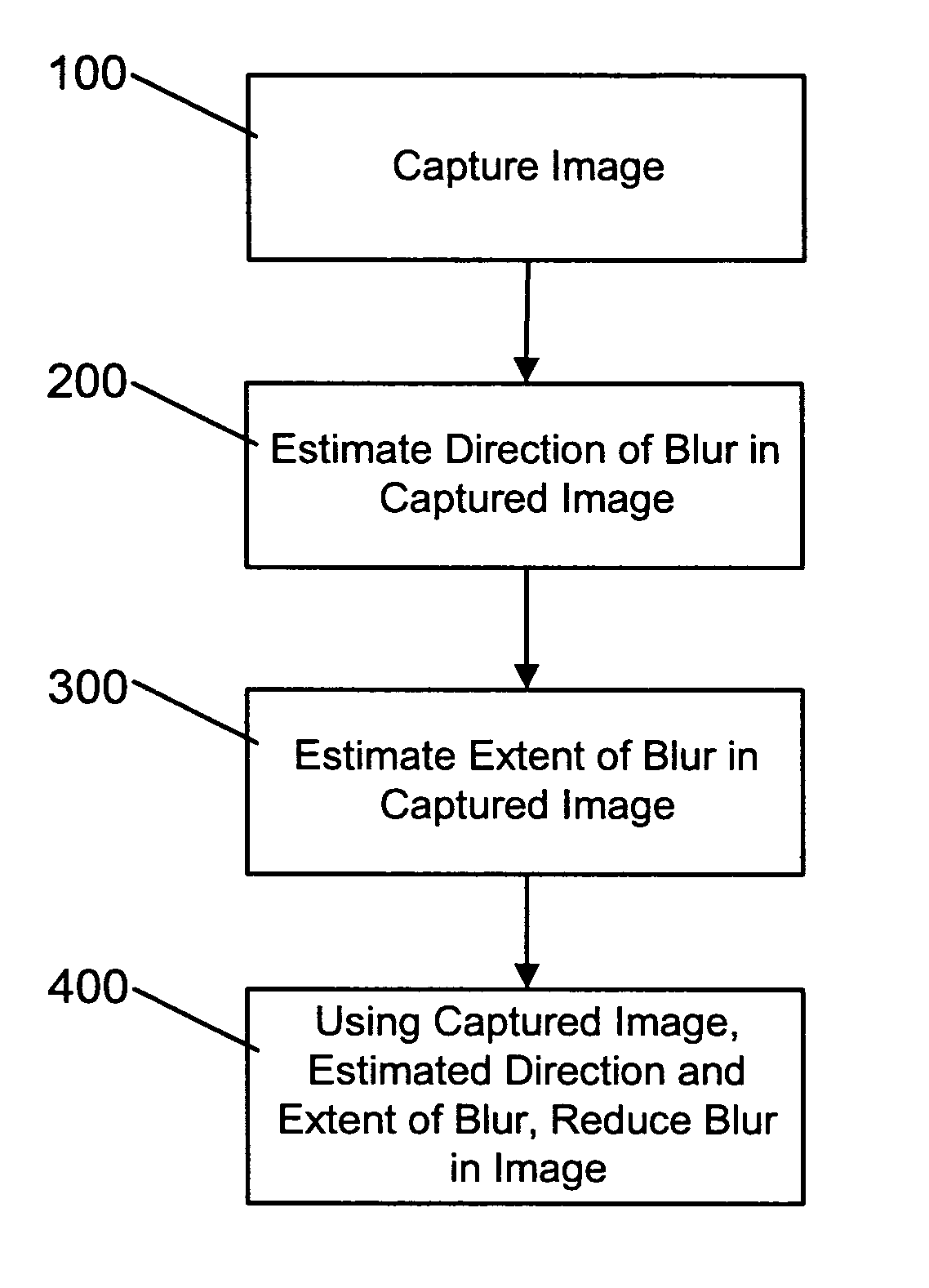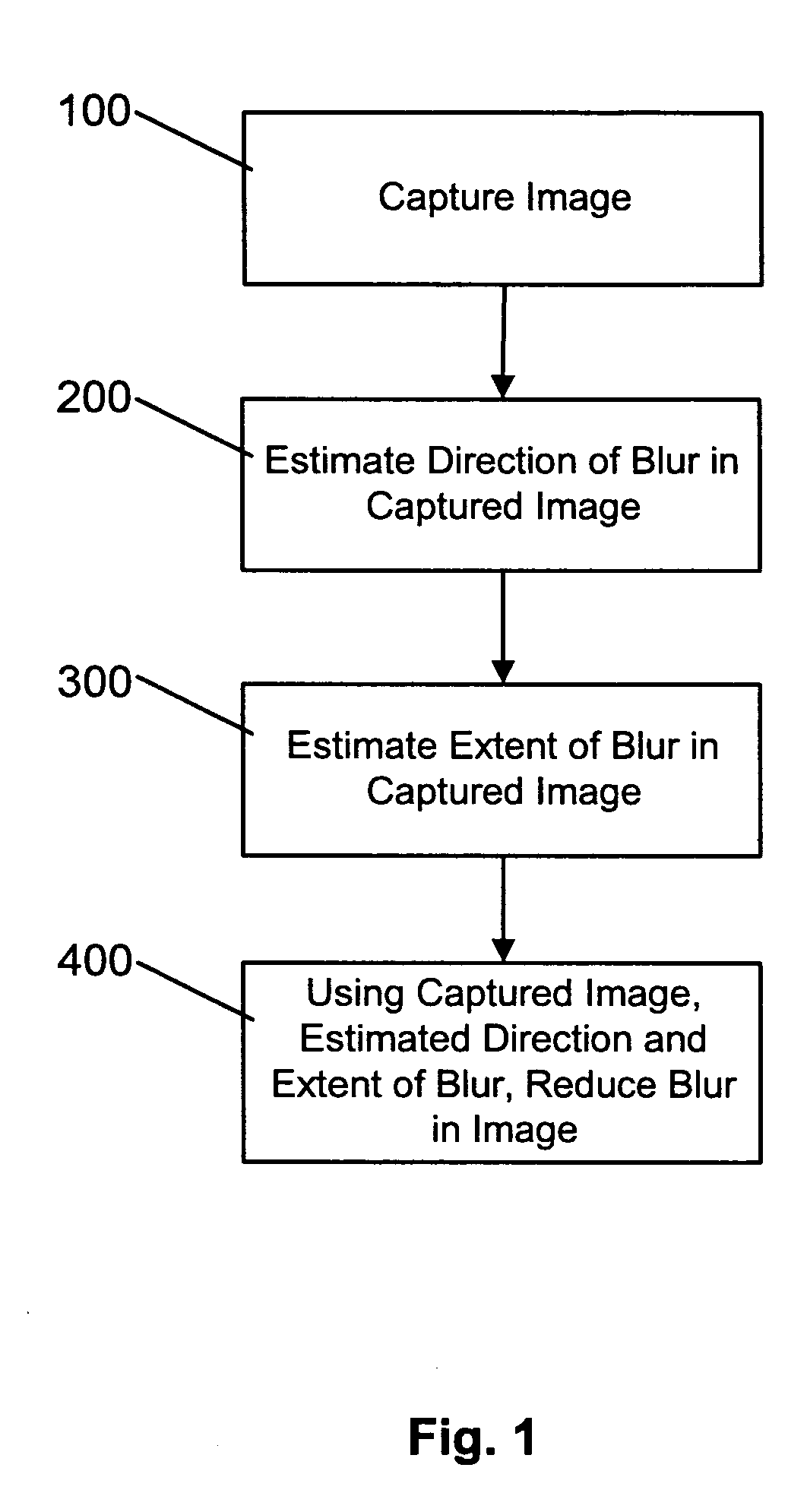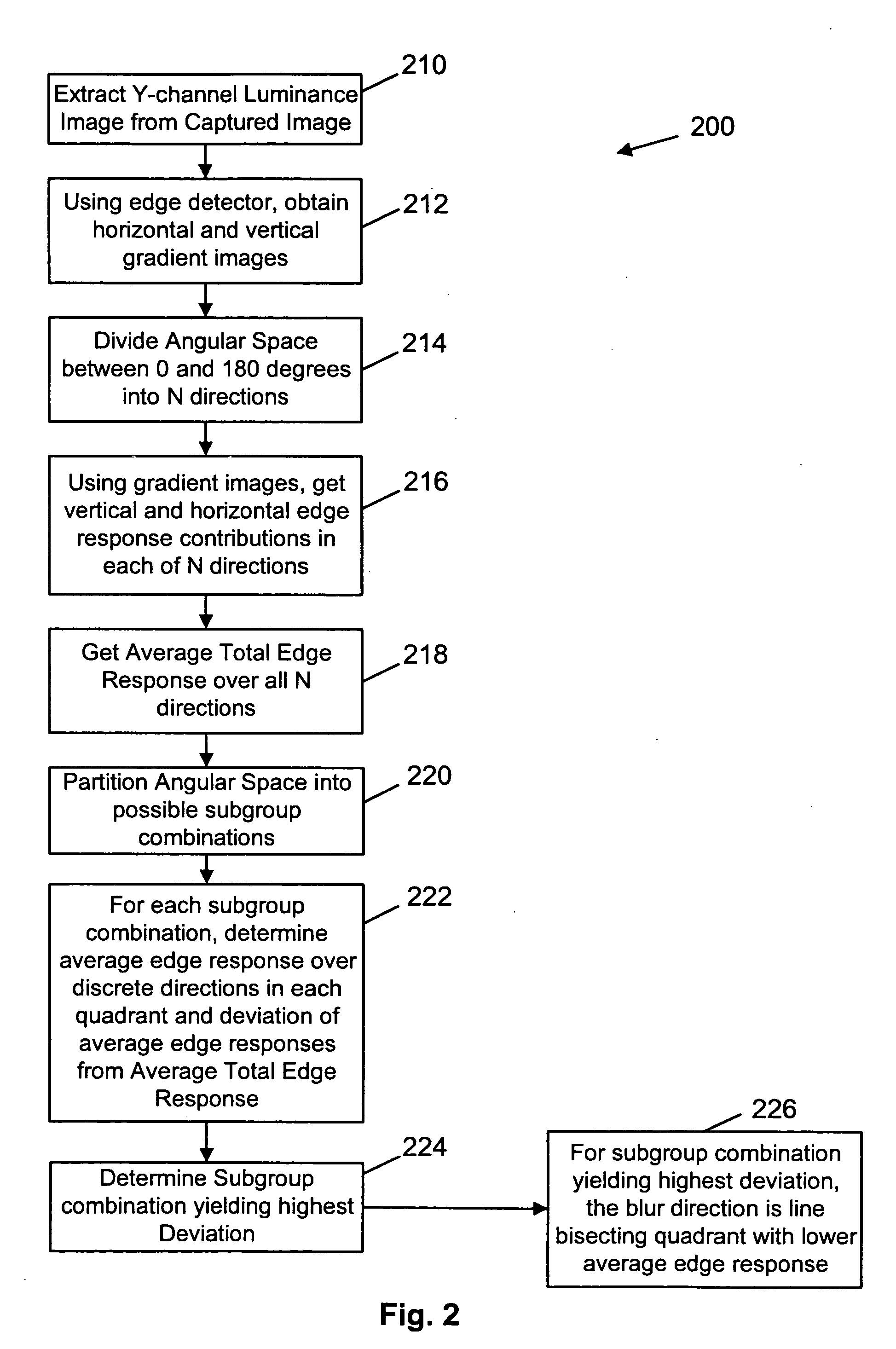Motion blur correction
a correction and motion blur technology, applied in the field of image processing, can solve the problems of general usefulness, direction estimation technique, and well-known motion blur problems, and achieve the effects of avoiding the effect of ringing, reducing the likelihood of declaring an inaccurate blur direction, and reducing unnecessary correction and overcorrection
- Summary
- Abstract
- Description
- Claims
- Application Information
AI Technical Summary
Benefits of technology
Problems solved by technology
Method used
Image
Examples
Embodiment Construction
[0037] Turning now to FIG. 1, a method of correcting motion blur in an image captured by a digital camera, digital video camera or the like is shown. During the method, when a motion blurred image is captured (step 100), the direction of blur in the captured image is initially estimated using edge information in the captured image (step 200). Once the blur direction is estimated, the extent of blur in the captured image is estimated using a correlation-based technique (step 300). With the estimated motion blur parameters (i.e. the estimated blur direction and blur extent) determined, the estimated motion blur parameters are used to reduce motion blur in the captured image (step 400) thereby to generate a motion blur corrected image.
[0038]FIG. 2 illustrates the steps performed during blur direction estimation (step 200). Initially, a Y-channel luminance image is extracted from the captured motion blurred image (step 210). The extracted image is then convolved with a Sobel edge detec...
PUM
 Login to View More
Login to View More Abstract
Description
Claims
Application Information
 Login to View More
Login to View More - R&D
- Intellectual Property
- Life Sciences
- Materials
- Tech Scout
- Unparalleled Data Quality
- Higher Quality Content
- 60% Fewer Hallucinations
Browse by: Latest US Patents, China's latest patents, Technical Efficacy Thesaurus, Application Domain, Technology Topic, Popular Technical Reports.
© 2025 PatSnap. All rights reserved.Legal|Privacy policy|Modern Slavery Act Transparency Statement|Sitemap|About US| Contact US: help@patsnap.com



